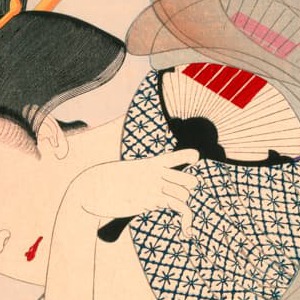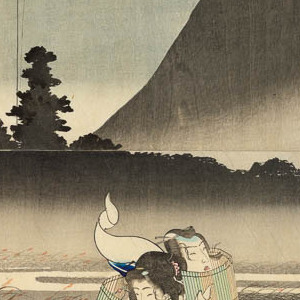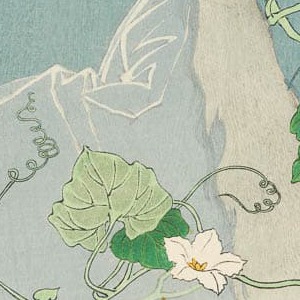Many prints were inspired directly or indirectly by The Tale of Genji (Genji monogatari), the classic Japanese novel written in the 11th century by Murasaki Shikibu (c.975-1025), a lady of the Heian court. It tells of the romantic adventures of Prince Genji.
Numerous episodes had been popularly depicted throughout the Edo Period, but the theme received a boost by the publication in 1829-42 of Ryutei Tanehiko’s serial novel Nise murasaki inaka genji (False Murasaki and a Rural Genji), which reset the romance in the 15th century, with a cynical hero, and narrative conventions borrowed from popular novels, Kabuki and puppet theatre, replacing the melancholy poetic tone of the original.
The popularity of this new version resulted in a Genji craze, with all sorts of Genji-themed products appearing for sale, Genji hairstyles, and a distinct genre of prints based on the story known as Genji-e (Genji pictures).







